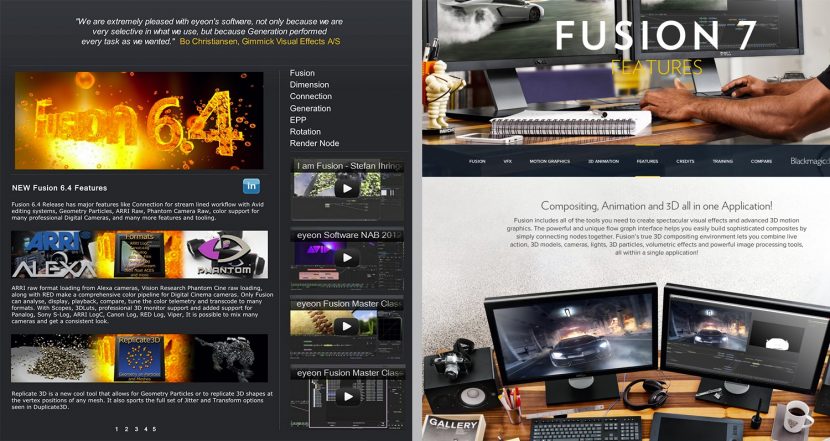It wasn’t a question of “if?”, but “when?” In move reminiscent of Resolve, Blackmagic Design has relaunched Fusion with a a free Windows version called “Fusion 7” and dropped the price of a more feature-rich Windows version called “Fusion 7 Studio” to $995. Not included at this point is the Linux version which, historically speaking, is a relative newcomer to the Fusion product line.
From a functionality standpoint, it appears as though there aren’t major differences in these versions compared to their predecessors from a functionality standpoint. The aim of this release is the launch of the product under the Blackmagic banner.
The free version is a significant beast from a feature-rich standpoint and artists will be able to finish a significant amount of work without any restrictions on where this work is used. While there will be inevitable comparisons between the new “Nuke Studio” and “Fusion 7 Studio” due to their names, at this point in time they are very different products from a feature standpoint, especially editing and timeline functionality.
What are the main differences between Fusion 7 and Fusion 7 Studio? Here are the key additions to the Studio version:
- Optical flow tools
- Stereoscopic 3D toolset
- Network rendering
- Generation
- OFX plugin support
- More flexibile scripting functionality
Generation is a significant addition to the software from a collaboration standpoint. It is the workflow management product which can serve as the hub for a facility using Fusion. It includes playback and review with notes/annotation, HFR 120fps stereo playback (beefy hardware required), audio playback, shot assignment, as well as various collaboration and metadata features designed for tracking projects and more.
Unlike “standard” restricted or training versions, projects from Fusion 7 can easily be read by the Fusion 7 Studio version.
No subscriptions or maintenance
In a big change from other products, there will be no maintenance contract, subscriptions, or additional costs per node for render licenses. What is left unsaid is whether there will be a charge for new versions of the software or whether they will be free, similar to Resolve. The Blackmagic press release states that this “means customers don’t get tricked into hidden or on going costly payments for software they’ve already purchased.”
This could be one of the most worrisome developments to other vfx software vendors. To be fair to most companies, it’s usually not an issue of customers being “tricked”, but actually sensible from a customer standpoint to help pay for the development of new features and improvements over time. Generally, there’s only so many copies of application “X” that a company can sell to the market, so they need to generate revenue somehow. But a company like Blackmagic (or Apple) sells hardware to their users which can help pay for software development. Other companies can’t do the same.
Kicking up the game in marketing
The launch is significant from a marketing perspective as well. There is little doubt that it is a vast improvement from the Eyeon site as it existed earlier this year before the Blackmagic acquisition (see image, below).

The site is incredibly slick and while one can argue the merits of the polished and idealized photography, from an overall perspective it presents a much improved image of Fusion. And in today’s world where users get most information from the web, this improvement can’t be understated. Also, it is clear from the presentation and wording that it is targeted towards a much broader and less vfx professional centric-environment.
As you get deeper into the site from the first Fusion page, it does get more and more detailed — all the way up to a rather exhaustive list of the product features on the product comparison page. It’s a sensible build over the story laid out on the site, and incredibly effective.

I don’t own any BlackMagic hardware yet, though it will probably be my next purchase if I venture into amateur film making. The ratio between their quality and price just seems really good. And making their software much more accessible than the competition just makes the decision so much easier.
Seeker